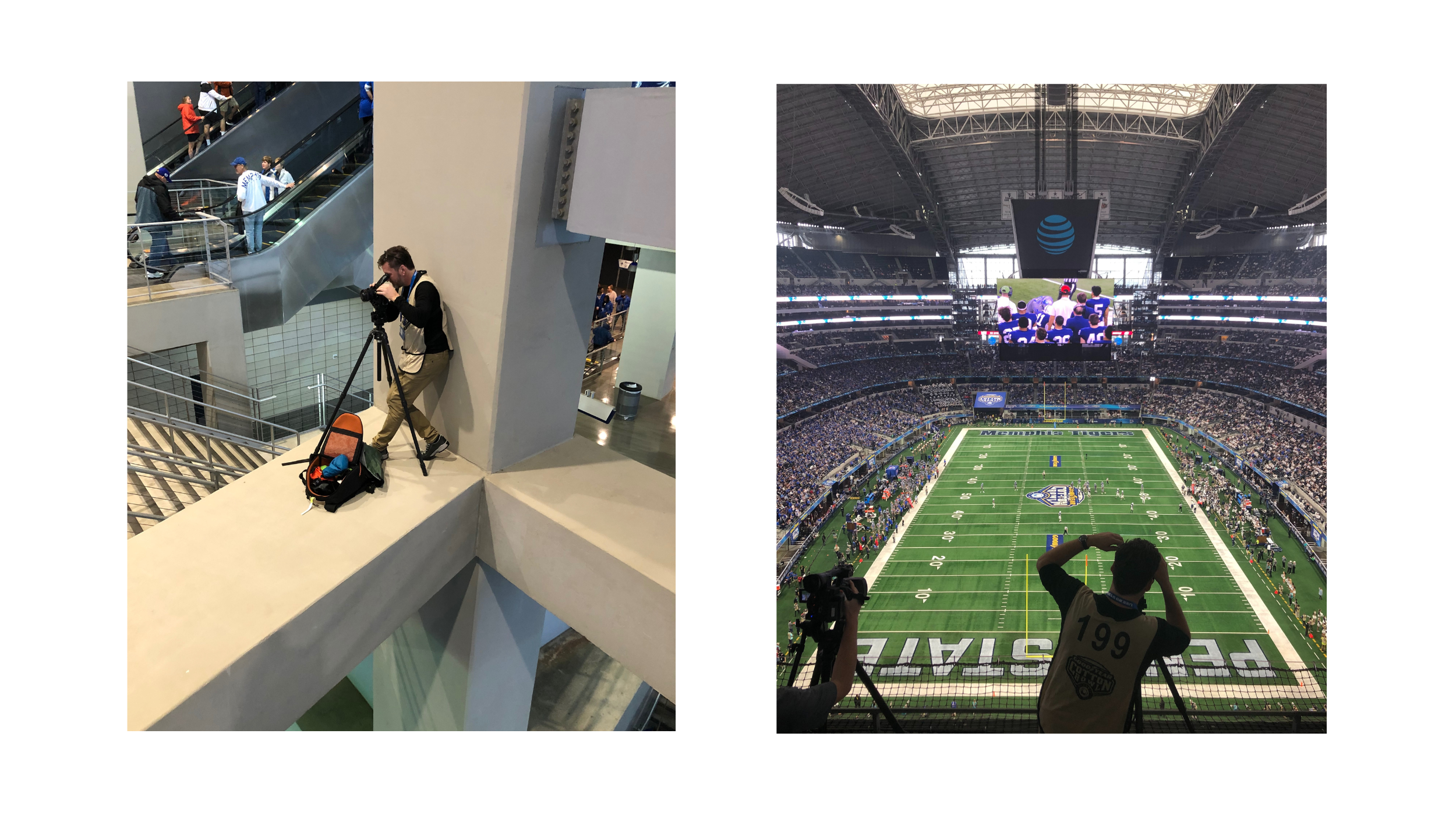How to Tell Great Stories through Architectural Photography
The photo shoot for U.S. Bank Stadium
Architects design transformative spaces. Communicators shape language into meaning. Architectural photographers capture the life of buildings. When these three perspectives work in concert, great design storytelling begins.
In architecture and design, photography can make or break a story. The best photographs don’t just show what a building looks like; they convey what it feels like. Great architectural photography communicates what design does for the people who experience architecture and the ideas it represents.
Yet too often, architects approach photo shoots as extensions of the design process rather than storytelling opportunities. They think in terms of documenting things they have created, not the potential audiences they could yet reach. That’s where communications professionals come in.
1. Start with the Story
Before a photographer sets foot on a project site, communicators should ask designers a simple but powerful question: What story are we trying to tell?
Every great design begins with a strong concept, so it’s critical to capture that concept verbally and visually to show why design matters. Whether the concept has to do with community engagement, sustainable innovation, or creating the perfect retreat for a poet seeking an ideal spot to write, align every shot of your photo shoot to your narrative. To tell a compelling story, you will need language and imagery to compel anyone–from editors to awards juries to future clients or employees–to care about your work.
I once worked with a communications director who was frustrated with what was, at first glance, an abundance of riches. He said: “We have beautiful photography from some of the best photographers in the world, but the images don’t match the design stories.” That disconnect is not uncommon. When images and verbal narrative don’t work in concert, it’s impossible to tell a clear and compelling design story.
A photo shoot should begin the same way a communications strategy does: with alignment. Write a short fact sheet identifying the project’s three key messages. Then determine which photos you will need to illustrate each point. If your shot list and story lines don’t work in tandem, one or the other has to change.
Behind the scenes at an architectural photo shoot with Nic Lehoux, Hannah Jaggers, Darryl Shields and Rachel Benavides
2. Bring Communications to the Table Early
Architects learn to draw and visually explain buildings so contractors and consultants can build them. Their audience is finite: clients and construction teams. Their visual storytelling focuses on how a design comes together: the structure, the systems, the intent.
Communicators, on the other hand, are telling a different story to a different audience. We’re connecting how a design changes lives to people who were not involved in the building process: editors and writers, potential clients, future hires, or a broader public. That story is emotional, experiential, and often aspirational.
A disconnect can arise when those two perspectives—design and communications—aren’t aligned before the photographer begins shooting. Architects think in terms of design integrity; communicators think in terms of audience impact. Both are significant. But without a shared understanding of which story the photography must tell, teams risk capturing images that are beautiful but unusable.
That’s why alignment before the shoot is everything. Align the key stakeholders for the shoot—designer, photographer, and communications lead—and agree on what stories the photos should tell. Once you know your audience, your intent, and your story, the photography becomes far more than documentation. It enables you to tell a clear and compelling story.
3. Know Your Audience
Every publication has a personality. Interior Design loves lush, activated interiors and favors certain photographers. Architectural Record prioritizes conceptual rigor and has editors who keep close tabs on specific contributors.
Do your research. Read the magazines, study their annual themes, and note which photographers they favor. Sometimes, access to a publication really does depend on who shoots your project. That’s not politics; it’s pattern recognition.
When pitching, resist the temptation to send every image. Lead with your best three to five photographs, each one aligned with the story you’re trying to tell. Build trust with editors through clarity and curation to make their jobs easier.
Behind the scenes at the SoFi Stadium architectural photo shoot with Nic Lehoux, Bruce Damonte and Daryl Shields
4. Align Intent and Outcome
Ask the design team how they plan to use the photos. Are they for business development? Awards submissions? Editorial placement? Each purpose demands a different approach.
If an architect wants to submit to an AIA Design Award, make sure you capture one strong image of every exterior façade. If they hope to land a placement in a specific design publication, make sure you’re using a photographer whose style fits that outlet.
The goal of architectural photography isn’t just beautiful images; it’s purposeful storytelling.
5. Measure What Matters
A great photograph does more than capture a moment; it advances a mission. When we aligned the photography and PR strategy for projects like SoFi Stadium and the UC San Diego North Torrey Pines Living Learning Neighborhood, the results spoke for themselves: internationational press, coveted awards, and, most importantly, stories that reached the right people.
At The Raygency, we teach clients that every image is a point of view for an idea, a value, or a vision of the future. When architectural photography and design narrative each support another, you do more than showcase your work. You inspire people to care about it.
Key Takeaway:
The best architectural photography starts with strategy, not a shot list. Know the story you’re telling, align the right people around it, and choose images that make meaning—in addition to beauty.

